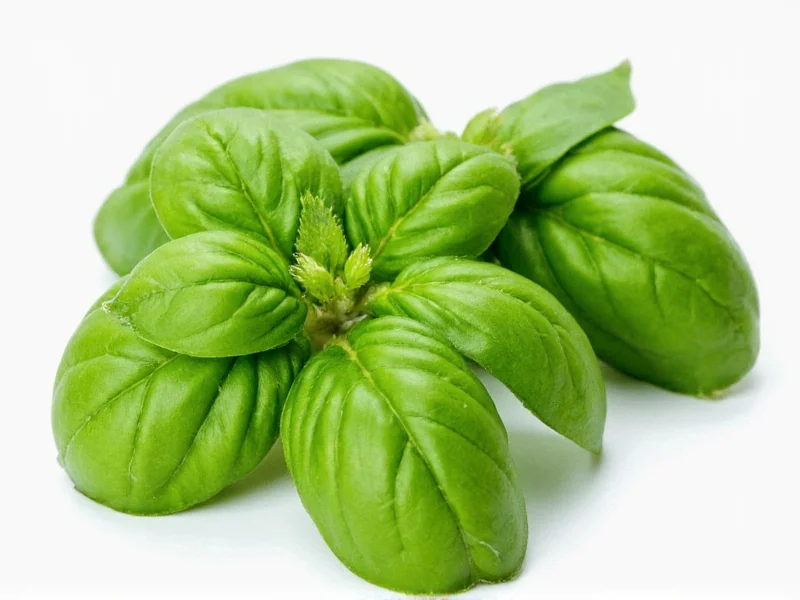Use a 3:1 ratio for fresh basil to dried conversion—1 tablespoon fresh basil equals 1 teaspoon dried basil. This accounts for dried basil's concentrated flavor due to moisture removal during the drying process.
When substituting dried basil for fresh in recipes, understanding the precise fresh basil to dried conversion ratio is essential for balanced flavor. The standard culinary guideline states that 1 tablespoon of fresh basil equals 1 teaspoon of dried basil. This 3:1 ratio exists because the drying process removes moisture, concentrating the essential oils and flavor compounds in dried basil.
Understanding Fresh Basil to Dried Conversion
Fresh basil contains approximately 90% water, which evaporates during the drying process. This concentration effect means dried basil delivers more intense flavor in smaller quantities. Using equal measurements would result in overpowering, potentially bitter dishes. Professional chefs and experienced home cooks rely on this conversion ratio to maintain recipe integrity when fresh basil isn't available.
Fresh Basil to Dried Conversion Chart
| Measurement | Fresh Basil | Dried Basil |
|---|---|---|
| Teaspoon | 3 tsp | 1 tsp |
| Tablespoon | 1 tbsp | 1 tsp |
| Cup | 1 cup | ⅓ cup |
| Ounce | 1 oz | ⅓ oz |
Flavor Differences Between Fresh and Dried Basil
While the fresh basil to dried conversion ratio provides measurement guidance, understanding flavor differences is equally important. Fresh basil offers bright, sweet notes with subtle peppery undertones and a delicate aroma. Dried basil develops deeper, more earthy characteristics with slightly muted sweetness. The drying process alters volatile compounds, creating a more concentrated but less complex flavor profile.
When substituting dried basil for fresh in recipes, consider these flavor adjustments:
- Add dried basil earlier in cooking to allow flavors to infuse
- Rehydrate dried basil in warm water for 10 minutes before use for sauces
- Reduce dried basil quantity by 25% for delicate dishes like salads
- Combine with a pinch of sugar to enhance remaining sweet notes
Best Applications for Each Form
Understanding when to use fresh versus dried basil maximizes culinary results. Fresh basil shines in dishes where its vibrant color and delicate flavor can be appreciated:
- Pesto and cold sauces
- Caprese salads and fresh tomato dishes
- Garnishes added at the end of cooking
- Cocktails and infused oils
Dried basil performs better in applications where long cooking times would diminish fresh basil's qualities:
- Stews and braises requiring extended simmering
- Dry rubs and spice blends
- Tomato-based pasta sauces
- Bread doughs and baked goods
Proper Storage for Dried Basil
Maximize the shelf life and flavor retention of your dried basil with proper storage techniques. Store dried basil in an airtight container away from light, heat, and moisture. Glass jars with tight-sealing lids work best. Properly stored dried basil maintains optimal flavor for 1-2 years, though peak quality occurs within the first 6 months.
Avoid common storage mistakes that degrade dried basil quality:
- Don't store near stove or oven (heat degrades flavor compounds)
- Avoid clear containers exposed to light (causes flavor deterioration)
- Never store in refrigerator (moisture causes clumping and mold)
- Don't keep in original plastic packaging (allows flavor escape)
Common Fresh Basil Substitution Mistakes
Even with the correct fresh basil to dried conversion ratio, several pitfalls can ruin your dish:
- Adding dried basil too late—dried herbs need time to rehydrate and release flavors
- Using old dried basil—stale dried herbs lose 70% of flavor compounds after 18 months
- Not adjusting for recipe moisture content—reduce liquid slightly when substituting
- Ignoring regional basil varieties—Genovese vs. Thai basil have different conversion needs
For best results, taste as you cook and adjust seasoning gradually. Remember that the fresh basil equivalent to dried basil varies slightly based on drying method—oven-dried basil tends to be more potent than air-dried.
Practical Conversion Tips for Home Cooks
When you find yourself needing to substitute dried basil for fresh in recipes, these practical tips ensure success:
- Crush dried basil between your fingers before adding to release essential oils
- For soups and stews, add dried basil during the last 20 minutes of cooking
- Create a basil "tea" by steeping dried basil in warm broth before adding to dishes
- When making pesto with dried basil, increase olive oil by 25% for proper consistency
Understanding the science behind the fresh to dried herb conversion chart helps you become a more adaptable cook. The concentration ratio isn't arbitrary—it's based on the physical removal of water content during drying, which typically reduces volume by 60-75% while concentrating flavor compounds.











 浙公网安备
33010002000092号
浙公网安备
33010002000092号 浙B2-20120091-4
浙B2-20120091-4